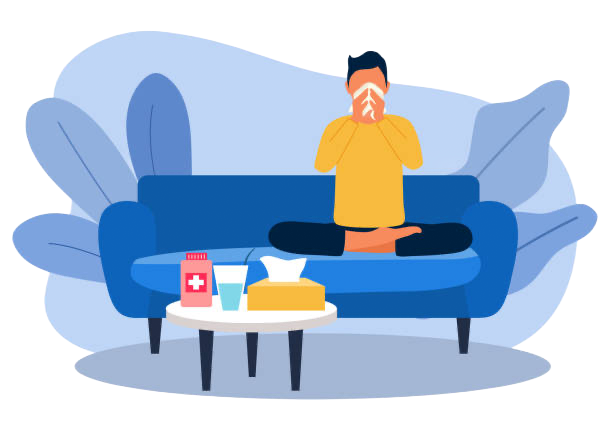

Los Angeles County is experiencing a surge in flea-borne typhus, sometimes called murine or endemic typhus. It’s a disease that many people have never even heard of, but it’s been steadily rising in our region for more than a decade. This year, cases are already trending higher than usual, and health officials have confirmed two separate outbreaks—one in Central Los Angeles earlier this year and a new one in Santa Monica over the summer.
The bottom line? Flea-borne typhus isn’t rare anymore. It’s here, it’s spreading, and both residents and doctors need to be aware.
Public Health officials have been busy investigating outbreaks in 2025:
Santa Monica outbreak: Five people got sick between May and July. Their ages ranged from teenagers to older adults, with the median age around 51. Every single person needed to be hospitalized, but thankfully, all of them survived and recovered.
Central Los Angeles outbreak: Earlier this year, another five people were diagnosed, mostly younger adults with a median age of 19. Three out of the five ended up in the hospital, but all recovered as well.
These outbreaks are just the tip of the iceberg. Flea-borne typhus is endemic in Los Angeles, which means it’s always present, but cases have climbed significantly since 2010. In 2024, the county recorded 187 cases—the highest ever. As of August 2025, we already have 106 cases, which is not only higher than last year at this time but also far above the five-year average. And we haven’t even reached the seasonal peak, which usually comes in late summer and fall.
The disease is caused by a bacteria called Rickettsia typhi, which is spread by fleas. These fleas often live on rats, opossums, and stray cats in Los Angeles. When infected fleas bite, they leave behind droppings that contain the bacteria. If those droppings get into a cut, scrape, or even rubbed into your eyes, that’s how the infection starts.
You cannot catch flea-borne typhus directly from another person. It’s not contagious the way a cold or flu is. The real risk comes from contact with fleas carried by wild animals or even by your own pets if they go outdoors. Dogs and cats don’t get sick themselves, but they can carry infected fleas into the home.
The tricky part is that flea-borne typhus doesn’t have one obvious symptom that sets it apart. It usually shows up one to two weeks after exposure with a sudden fever, chills, headaches, body aches, and sometimes abdominal pain or vomiting. Some people develop a rash after about a week, but not everyone does.
Because the symptoms are so general, it’s easy to mistake typhus for the flu or another common infection. But in some people—especially older adults or those with weakened immune systems—it can become serious. The infection can spread and cause complications with the kidneys, lungs, liver, heart, or brain. Hospitalizations are common in severe cases, and though rare, deaths have occurred.
Doctors don’t have a quick, reliable test for flea-borne typhus in the first few days of illness. Blood tests are often negative at the start and can even confuse typhus with other related infections. Because of this, doctors in Los Angeles are being urged to treat patients based on symptoms and exposure risk instead of waiting for lab confirmation.
The good news is that flea-borne typhus responds well to antibiotics. The treatment of choice is doxycycline, which works for both adults and children. When started early, it shortens the illness and prevents severe complications. Waiting too long to treat can make recovery harder and more dangerous, which is why awareness is so important.
Since there’s no vaccine for flea-borne typhus, prevention is the best strategy. Here are the steps experts recommend:
Protect your pets. Use veterinarian-recommended flea control products regularly, and keep your dogs and cats indoors when possible.
Limit contact with strays and wildlife. Don’t feed or pet stray cats, and avoid close contact with opossums or rodents.
Clean up around your home. Keep trash in tightly sealed containers, don’t leave pet food outside, and clear out brush, clutter, or overgrown vegetation that might attract animals.
Block animal entry points. Seal crawl spaces, attics, and other spots where animals might nest near your house.
Use repellent. When spending time outdoors, especially in areas where animals roam, use EPA-registered insect repellents that work against fleas.
Pay attention to your health. If you get sick with a sudden fever, headache, and body aches, and you think you may have been exposed to fleas, don’t ignore it. See a doctor right away and mention possible flea-borne typhus exposure. Early treatment makes all the difference.
Flea-borne typhus has been quietly rising in Los Angeles for years, but the current outbreaks in Central L.A. and Santa Monica show that it’s becoming a real public health concern. With cases hitting record highs and climbing earlier in the year than expected, residents need to be more cautious about fleas, pets, and wildlife.
For most people, typhus can be treated effectively if caught early. The real danger is not recognizing it in time. Awareness is our strongest defense: keep fleas under control, limit exposure to wild animals, and get medical care quickly if symptoms develop.
The surge in flea-borne typhus is a reminder that even in a modern city like Los Angeles, diseases we think of as “old-fashioned” can still spread in our backyards. Staying alert and taking simple precautions can go a long way in protecting yourself, your family, and your community.